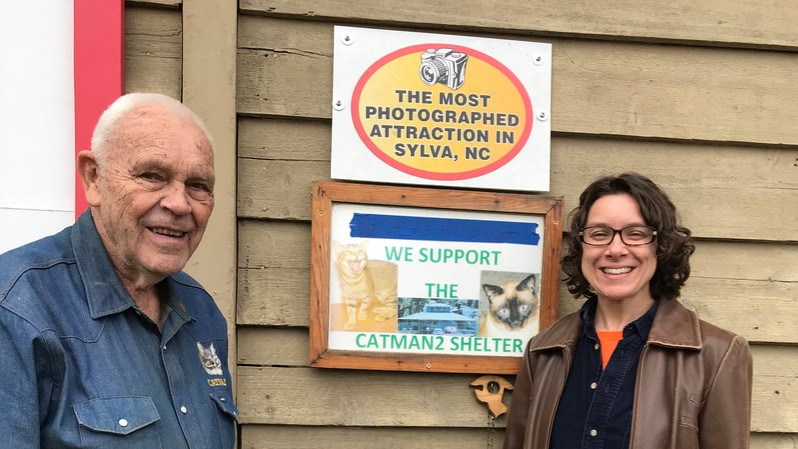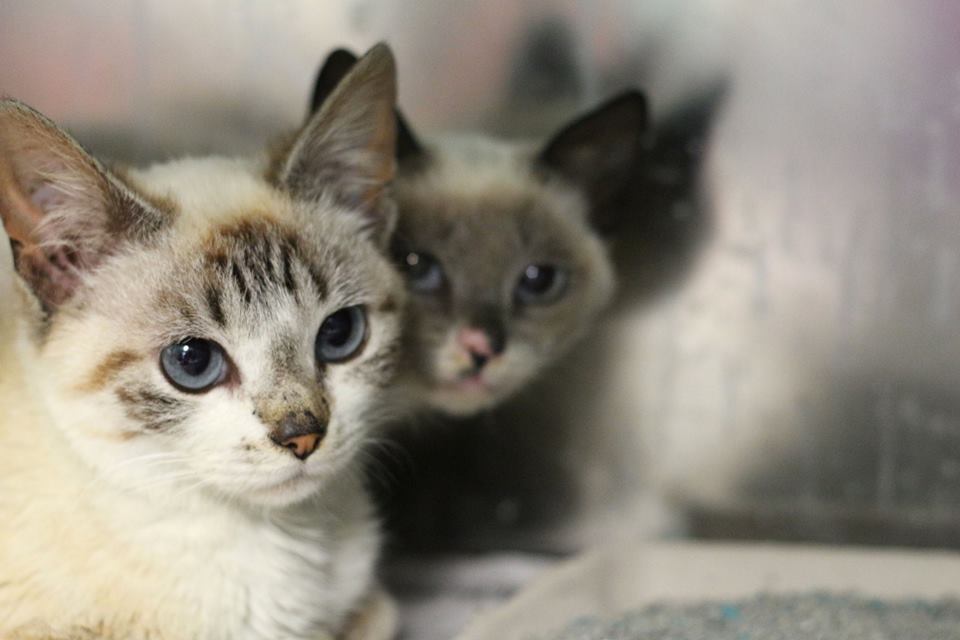When I retired after teaching biology for twenty-two years at a junior college, I was happy to be able to quit teaching in a classroom, but found myself with the need to go on working in education in other ways. When my wife was able to retire as well, we moved to western North Carolina. We’d always had a love for cats and had shared our home with many over the years. So, in 1996 I opened a cats-only shelter and adoption center called Catman2 in a converted tool shed.
In 2002, we moved to a new location and built a four thousand square foot building that is now known as The Catman2 Shelter. Being a collector and a pack rat, over time I had amassed a large collection of cat art, which I displayed on the walls of the cat shelter. Soon there was so much art that one day someone told me I should open a cat museum.
This led to my doing some research where I found there were several museums for house cats throughout the world, but there were none in America. Seeing a void, I felt the need to fill it and soon started collecting more art and other items related to the house cat. For example, this included sheet music for songs with the word cat in the title. Soon I found close to a hundred copies.
Then I found advertising material in magazines where the image of a cat caught the eye of the reader to try to persuade them to buy something else. A cat named Chessie, a kitten shown sleeping on a pillow, was used as the corporate logo for the Chesapeake and Ohio Railroad. She was used first to sell travel in their air conditioned Pullman cars and later helped the railroad become a major carrier of coal and armament to ships that would carry the tanks and ammunition across the seas during World War II.
A visit to a toy store selling wind-up toys introduced me to clockwork cats called automatons, and soon I had a collection of over three hundred. This was followed with books about cats, the stories of cats in Egypt (including cat mummies), carved cats that were once part of a carousel and literature about the history and origins of house cats.
Now I’d found something new that I wanted to teach about. Soon the collection had grown too large to fit on the walls of the shelter and it was time for me to open a cat museum. I went on adding more items to the collection and searched for the right location. In 2017, I was offered a small space in an antiques mall where I opened The American Museum of the House Cat. By the end of two nine-month seasons, in 2017 and 2018, the museum had attracted more than 12,000 visitors from all over the world and had become a destination and attraction for the
local area.

Dr. Harold Sims and Museum Docent Kelly Jewel Timco in front of the American Museum of the House Cat.
This proved to me there was an interest and a yearning for education about America’s favorite pet, and I was ready to become a teacher again and teach them the history of the house cat. In the summer of 2018, construction began on a new museum building three times larger than the original. I see what I have done as an example of why retirement doesn’t have to be seen as the end of life, but instead can be an opportunity to do something that you enjoy that you think will make the world a better place than you found it.
The purpose of the museum is to help support the Catman2 Shelter and its low-to-no-cost spay/neuter programs. We help people in the community fix their own cats and we also have a Trap/Neuter/Return (TNR) program for feral cats. During the past two years, we helped pay to spay or neuter more than 500 cats. Our TNR program fixes around 100 feral cats every year. Spaying and neutering feral cats reduces the number of kittens that will be born, stabilizing and decreasing the feral population.

Mateo and Mason were two very sick kittens when we rescued them and both had to have emergency care. Thanks to quick action, both boys got better and went on to find loving homes.
In past years, feral kittens, and sometimes the mother cat, were taken by the people who found them to the Jackson County Animal Shelter (JCAS). Back then, fewer cats were adopted and many were euthanized. For the past two years, JCAS has had a 100% live release rate for its adoptable cats. Now JCAS and Catman2 work together to provide humane options for reducing feral cat populations. By reducing the number of breeding feral and owned cats, we have reduced the workload at the county shelter. This gives them more time to respond to animal control calls and spend less time euthanizing cats and kittens, a job I don’t think anyone ever enjoyed.
Catman2 has been dedicated to the welfare of cats in Jackson County since 1996. I never ask for a salary from Catman2 Inc. or the museum. I built and own all of the buildings and the contents of the museum. I ask for no rent. I can do this only because I was lucky enough to be alive during more prosperous times, when a hard-working person could earn, invest, and save money. I am retired and able now to give back; this is my gift to cats and cat lovers. Although the museum has been visited by more than 12,000 people, we expect more will visit in the future as our reputation grows through word of mouth and social media.
This year the museum will still be at the old location, at Old School Antique Mall, 4704 Hwy 441
South, Sylva, North Carolina. We are open Tuesday through Saturday 10 to 4:30, 12 to 4:30 on Sunday and closed on Monday. Admission is $7.50 for adults and children over 12, and $2.00 for children 6-11 years of age. Babies are free as are small pets on a leash. A tour should last 40 minutes to an hour or more, but you may stay as long as you wish.
Featured image: The American Museum of the House Cat, in Sylva, North Carolina. This image and all images in this post via Dr. Harold Sims.







